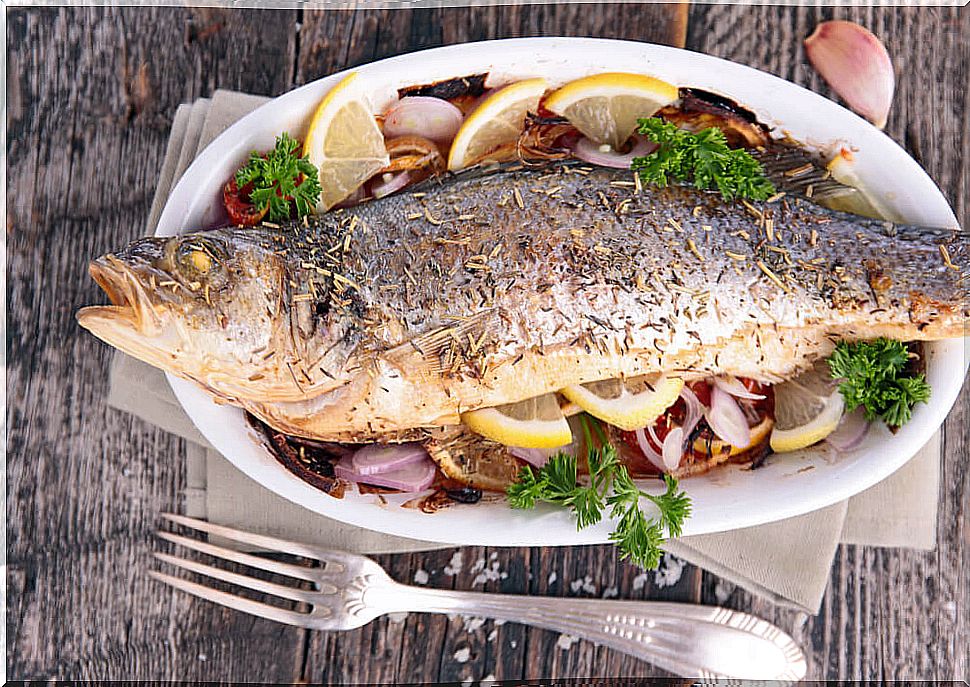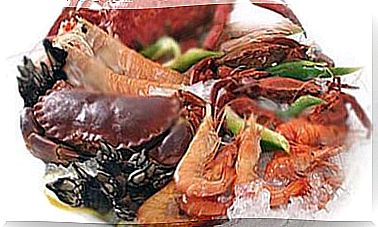What Fish Do Not Have Anisakis?
Not all fish have anisakis; there are some varieties that do not have this parasite inside and, therefore, its consumption is considered safe. Anisakis is a nematode that can be very harmful when introduced into the human body.
According to information published by the Centers for Disease Control and Prevention (CDC) , it is the cause of a disease known as “anisakiasis”, which can trigger serious reactions in the body, both digestive and allergic.
According to this same source, the best way to avoid this condition is by avoiding the consumption of raw fish or undercooked squid. Therefore, in addition to knowing the fish that do not have anisakis, we will see some tips to reduce the risk of infection.
Fish that do not have anisakis
Anisakis is a parasite that, according to a review published in the International Journal of Parasitology, can occur in different strains, which determines the subsequent reaction by the human body.
It is usually present in cephalopods, but also in fish such as hake, horse mackerel, sardine or cod. However, not all products of this type are capable of harboring this nematode inside.
In general, fish that live in fresh waters do not usually present this parasite. Both trout and farmed salmon are safe foods from the point of view of the absence of this microorganism.
It is necessary to bear in mind that it is a parasite whose ingestion can trigger a process of anaphylaxis, as stated in an article published in the journal Internal Medicine. For this reason, it is also necessary to take into account which fish contain it and, if so, how to end it.

Ways to kill anisakis
Although a fish is likely to contain anisakis inside, there are ways to avoid its presence. One of them is to put it in a brine or bathe it in salt. Thus, while cod could harbor this parasite, its version preserved in salt is considered safe.
Another method of killing this dangerous organism is through a freezing process. A study published in the journal Parasitology Research highlights that it is necessary to subject the fish to a temperature below -15 ºC, for 24 hours, to ensure the destruction of the parasite.
This is the reason why, before consuming raw fish, it is recommended to freeze it. Thus, the risk of food poisoning is considerably reduced. Therefore, it is possible to safely prepare preparations such as sushi, without the risk of subsequent problems.
Cook the fish to finish off the anisakis
Apart from frozen, there are other methods to avoid poisoning due to anisakis. An effective option is to subject the fish to high temperatures. Both fried foods and those cooked in the oven are effective in minimizing the risk of contamination by this parasite.
However, smoking or marinades are not enough to kill the organism that causes these infections. To ensure the wholesomeness of smoked fish, it is convenient to subject them to a subsequent freezing process; otherwise, its consumption may not be safe.
It should be noted that ingestion of the nematode is dangerous, since most people do not know if they are allergic to this organism or not. Consequently, what could be a simple uncomfortable process from the gastrointestinal point of view, can turn into an acute disorder with health risks.
Therefore, it is crucial to ensure the absence of anisakis in fish before consuming it, either because the food in question is not a possible host or because the necessary measures have been carried out to eliminate the parasite.

Not all fish have anisakis
As we have seen, anisakis can be a significant health risk. Now you know that fish are not likely to house it inside. If in doubt, think that river or farmed fish are clean of this nematode.
In addition, when cooking food from the sea, be sure to cook it thoroughly, which guarantees its health and the absence of pathogens.








